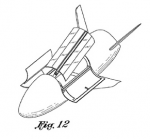There was a hearing in Congress today on climate science, though it apparently changed nothing: the Republican leadership in the committee is going to proceed with legislation to try to roll back the EPA regulations relating to carbon dioxide imposed by the Obama administration.
The most interesting detail I gleaned from the above article however was this quote, written by the Science journalist himself, Eli Kintisch:
The hearing barely touched on the underlying issue, namely, is it appropriate for Congress to involve itself so deeply into the working of a regulatory agency? Are there precedents? And what are the legal and governance implications of curtailing an agency’s authority in this way?
What a strange thing to write. If I remember correctly, we are a democracy, and the people we elect to Congress are given the ultimate responsibility and authority to legislate. There are no “legal or governance implications.” If they want to rein in a regulatory agency, that is their absolute Constitutional right. That Kintisch and his editors at Science don’t seem to understand this basic fact about American governance is most astonishing.

